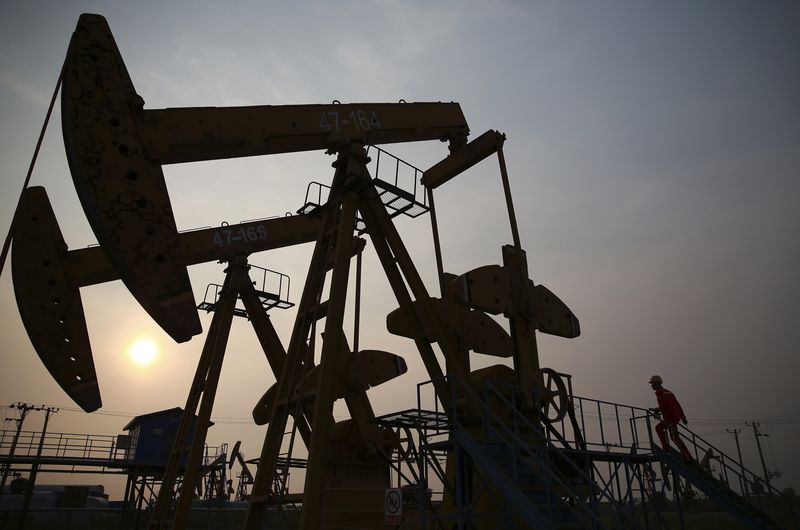By Robert Harvey
LONDON (Reuters) -Oil prices fell further on Friday, as demand fears due to macroeconomic headwinds were compounded by another partial lifting of Russia’s fuel export ban.
On Friday, futures were down 47 cents, or 0.56%, at $83.60 at 1411 GMT, while U.S. West Texas Intermediate crude futures were down 55 cents, or 0.67%, at $81.76.
Brent and WTI futures were on course for almost 12% and 10% week-on-week declines, respectively, on Friday, as concerns that higher for longer interest rates will slow global growth and hammer fuel demand offset announcements by Saudi Arabia and Russia confirming voluntary supply cuts to the end of the year.
U.S. job growth rose by 336,000 in September according to Labor Department statistics, smashing economists’ forecasts of a 170,000 rise.
The sentiment of the statistics is likely mixed for oil prices. A robust U.S. economy could buoy sentiment for near-term oil demand, analysts said, but conversely the statistics resulted in a stronger U.S. dollar and increased bets on another interest rate hike in 2023.
A strong U.S. dollar is typically negative for oil demand as it makes the commodity relatively more expensive for holders of other currencies, while the expected impact on demand of higher for longer interest rates has been a major factor in this week’s crude price slide.
Russia announced on Friday that it had lifted its ban on diesel exports for supplies delivered to ports by pipeline, under the proviso that companies sell at least 50% of their diesel production to the domestic market.
Almost three quarters of Russia’s 35 million tonnes of diesel exports were delivered via pipeline in 2022.
The price spread between gasoil and Brent futures fell to the lowest since July at $23.59 a barrel on the news, but have since rebounded to $26.77 at 1411 GMT.
“Fear for the health of the global economy and thus oil demand going forward is at the heart of the sell-off,” SEB analyst Bjarne Schieldrop said.
But reports of firmer Chinese travel activity could provide a floor to prices. The country’s mid-autumn and National Day holiday travel rose 71.3% on the year and 4.1% compared with 2019 to 826 million trips, according to news agency Xinhua.
Read the full article here





